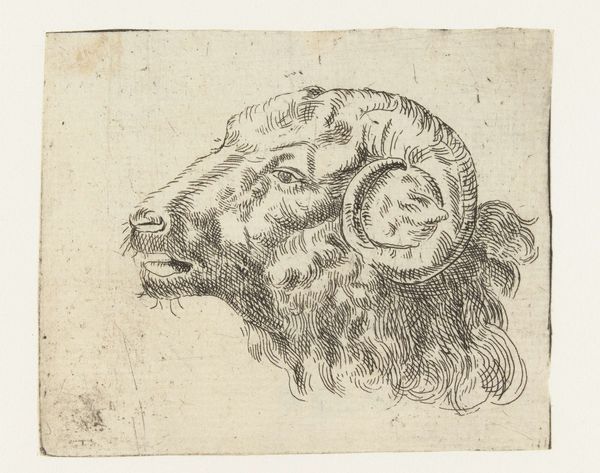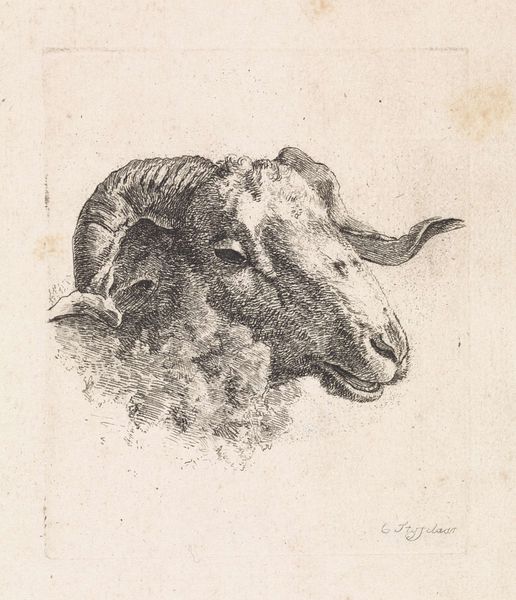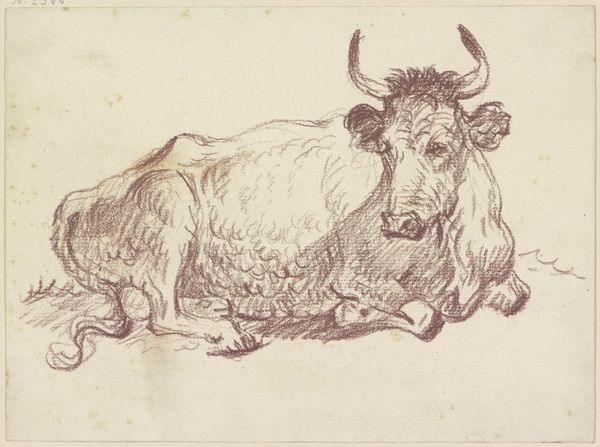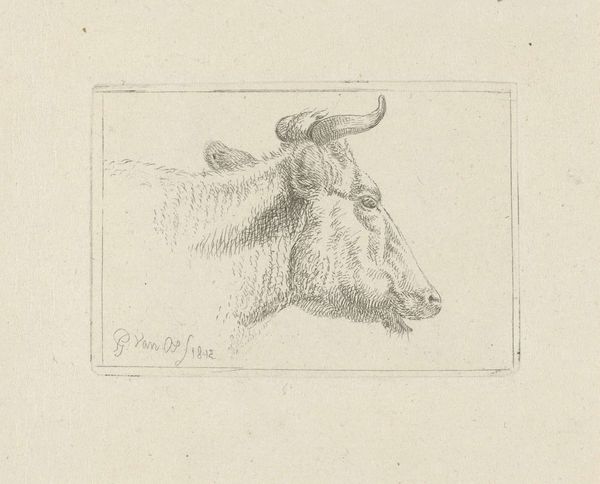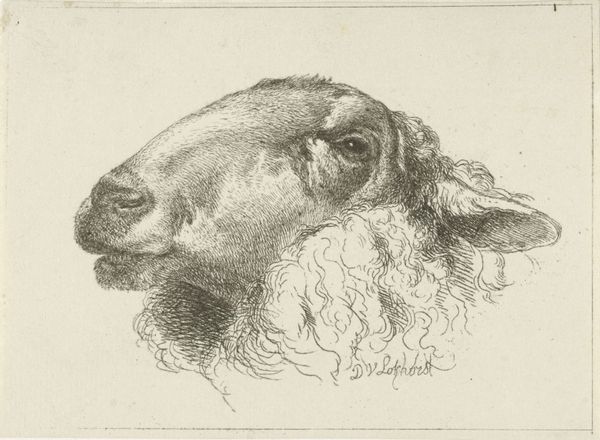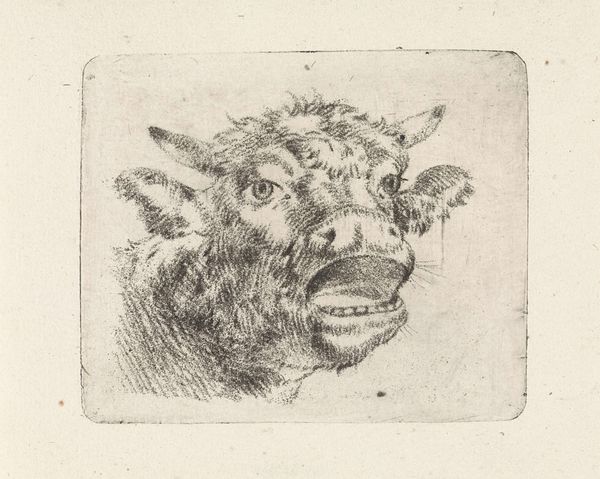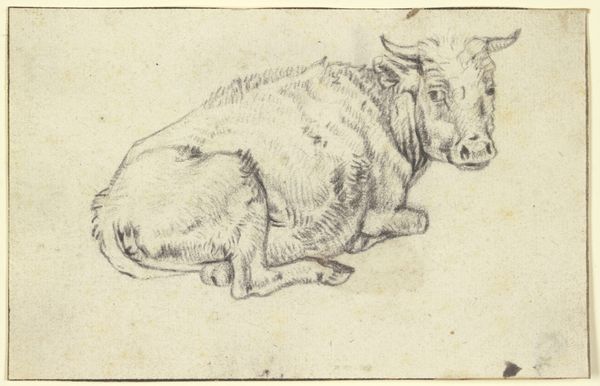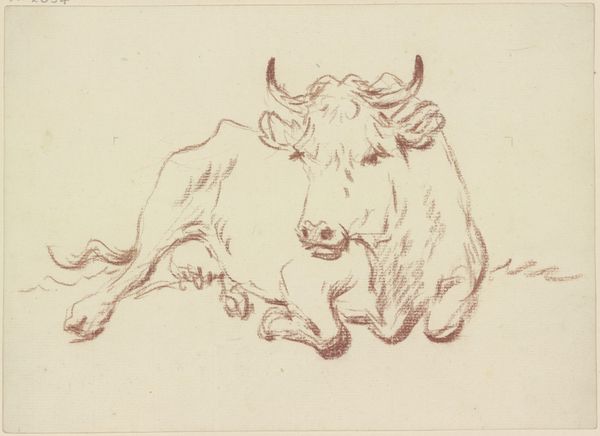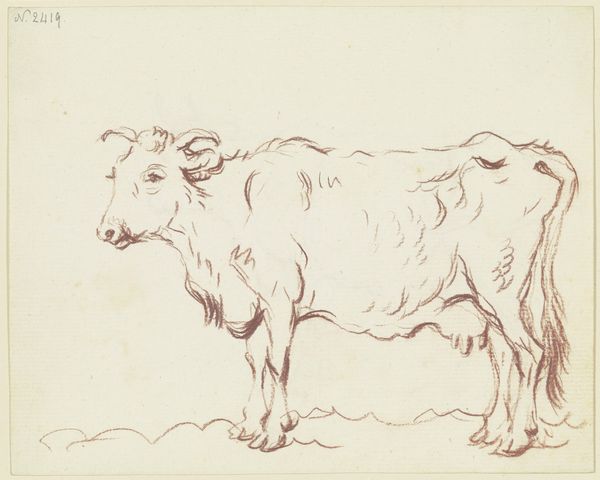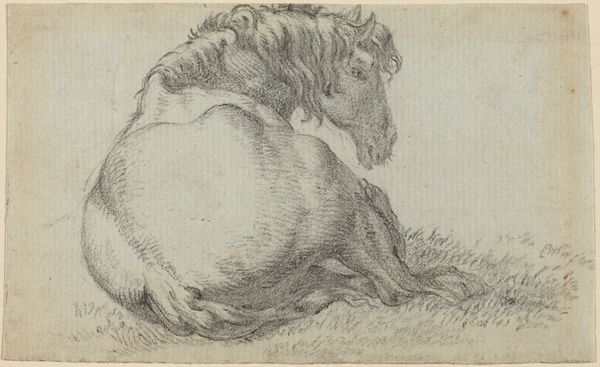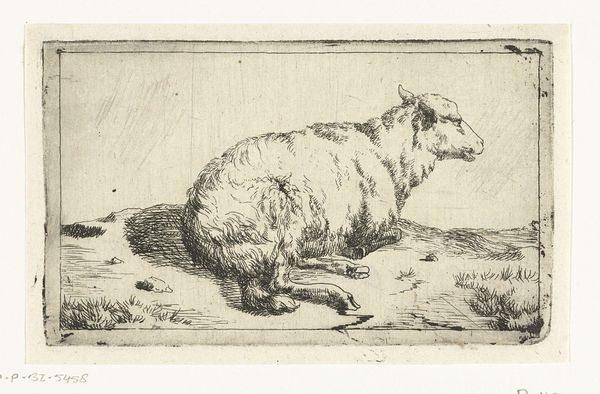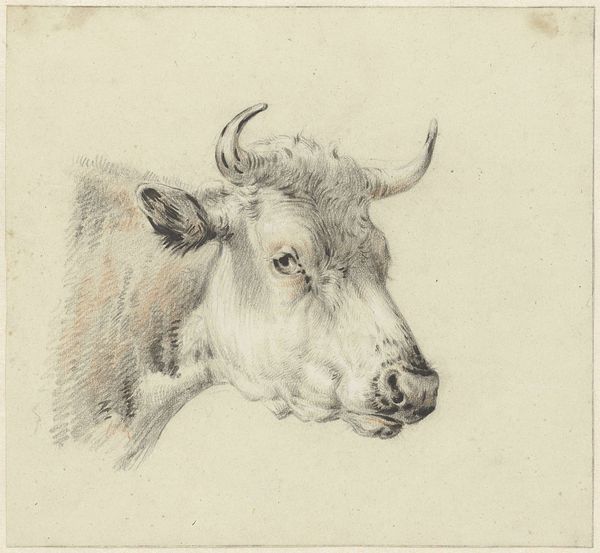
drawing, pencil
#
portrait
#
pencil drawn
#
drawing
#
pencil sketch
#
pencil drawing
#
pencil
#
realism
Dimensions: height 86 mm, width 101 mm
Copyright: Rijks Museum: Open Domain
Editor: This is "Ramskop, naar links" by Abraham Delfos, likely created between 1741 and 1820. It's a pencil drawing. I'm struck by the detail in the ram's wool and the intensity of its gaze. What do you see in this piece? Curator: Well, immediately, I see a symbol laden with historical baggage. Think about the ram across cultures – ancient fertility rites, a zodiac sign, a sacrificial figure. But what was Delfos trying to say during this period? Was he referencing the burgeoning agricultural practices of the time? Consider how land ownership and animal husbandry were deeply intertwined with social hierarchies and power. Editor: So, beyond just a drawing of an animal, you’re seeing a commentary on society? Curator: Exactly. The meticulous detail could be read as an almost scientific interest in classifying and controlling the natural world, something that European societies were intensely engaged with during the Enlightenment and beyond. Do you see that hint of arrogance in its expression? Editor: Now that you mention it, I do. It's not just a passive animal portrait. There’s a definite attitude there. Almost like it's aware of being observed and, in a way, judged. Curator: Precisely! And think about the implications of the title "Ramskop, naar links". The specificity directs our gaze, placing us in a power dynamic. We are positioned to the right, looking at it looking to the left...it is a conversation where, even through art, our positions have historical precedence. Editor: This makes me rethink what I thought I knew about animal portraiture. It’s not just about representing the animal, it’s about the power dynamics inherent in that representation. Thanks! Curator: My pleasure. Remember, even seemingly simple images are embedded with complex social and historical narratives waiting to be unpacked. Keep questioning!
Comments
No comments
Be the first to comment and join the conversation on the ultimate creative platform.
